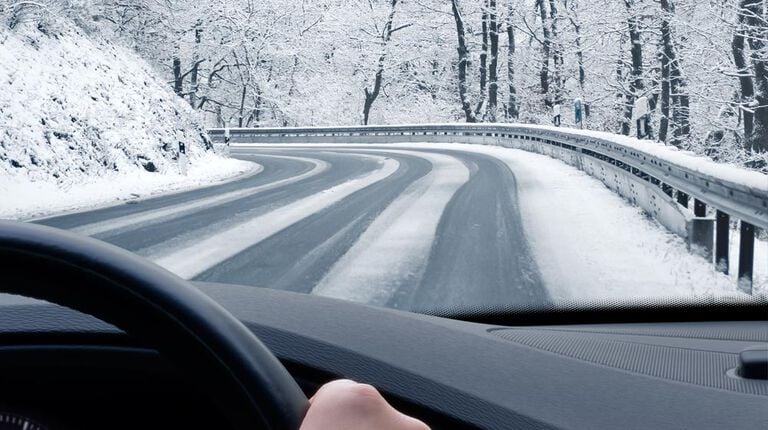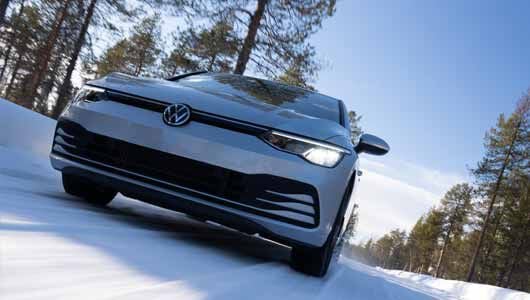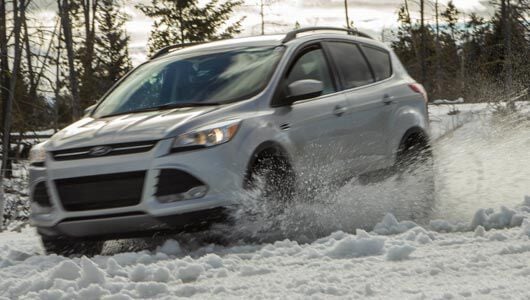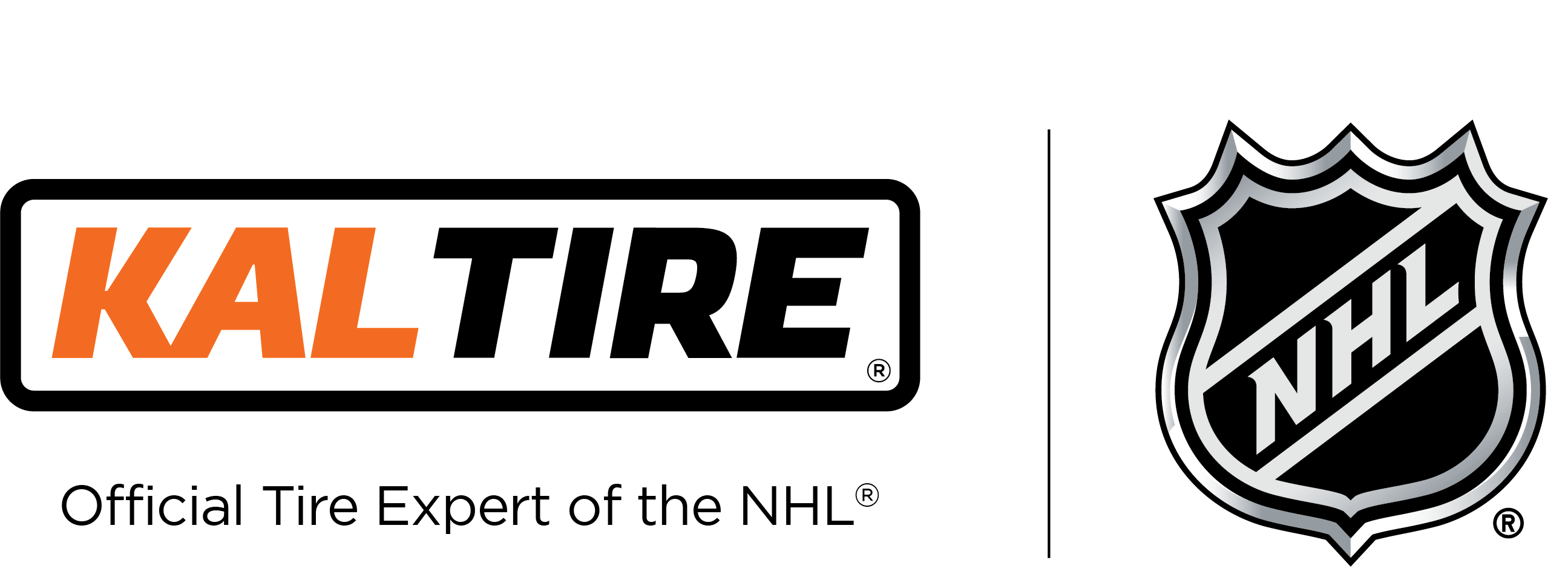A checklist to get your car winter ready.

Winter is coming, and that means winterizing your vehicle this fall. With this handy checklist, getting your vehicle ready is easy. But, if you’re looking to save time, your local Kal Tire team members are qualified to get your vehicle winter ready!
Tires
The specialized rubber compound in your winter tires allows them to stay flexible and grip snow and ice for optimum traction. Due to the unique rubber makeup, summer months degrade winter tires quickly.
To learn more about winter compounds, and the difference between winter, 3-season and summer tires, check out, What happens when you use winter tires year round?
Different tires have different symbols. To find tires suitable for winter conditions, you want to keep an eye out for the three-peak mountain symbol or the new ice grip symbol. Learn more about the new emblem in our article, Ice grip symbol: A new standard of winter tire.
When to Change to Winter Tires
Tire manufacturers recommend installing winter tires as soon as the temperature is consistently at +7 degrees Celsius or below.
Tire Tread Depth
For the best traction, make sure you also have sufficient tread depth on your tires.
Transport Canada says tires worn close to 5/32” (4 mm) should not be used on snow-covered roads. Unsure of how to check? Read, How to Measure Tread Depth on Your Tires for tips and on what each tread depth level means.
Tire Air Pressure
Cold air can make the pressure in your tire drop significantly, affecting your vehicle's ability to bite ice and snow. Don’t forget to check your spare tire’s pressure and ensure your tire changing kit is intact and in your trunk.
Vehicle Fluids & Lubricating Systems
Maintaining your vehicle's fluids is crucial for ensuring your engine stays healthy and efficient, especially as the weather changes. Optimal engine temperatures typically run between 90°C and 105°C (195°F to 220°F). Without proper lubrication, friction and heat buildup can cause severe engine damage. Below is a guide to the essential fluids and components that require attention this fall.
Engine Oil
Regular oil changes are vital to keep your engine running smoothly. Most manufactures used to recommend oil changes every 5000-7000 km’s, but with changes in technology with vehicle engines and oils it is not uncommon to see oil service intervals at 15,000 km’s or more. One common question you'll face when servicing your oil is whether to choose synthetic or conventional oil. Here’s a quick overview:
- Synthetic Oil: This produces fewer emissions due to the uniform molecular size that causes less friction. Enjoy the benefits of better fuel economy, longer intervals between oil services (10,000 km vs. 5,000 km), better all-weather protection, and much more.
- Conventional Oil: Often more economical, conventional oil is typically required for older vehicles. Many older vehicles were designed to run on conventional oil as their tolerances and technology did not require the added protection of a synthetic oil. Although your vehicle may not be required to run a synthetic oil most consumer still choose to use synthetic for the added benefits and protection.
For personalized recommendations, visit your local Kal Tire store, where our experts can help you choose the best oil for your engine requirements and vehicle needs.
Fuel
It is imperative to keep your gas tank at least half full in winter. This prevents condensation and ice from building up in your fuel line when the engine is running in those instances when you’re warming your vehicle or stuck in traffic.
Heating, Cooling, and Exhaust
The A/C system’s purpose is to defrost and de-humidify the inside of your vehicle in winter. It’s crucial to make sure that it’s working as manufactured.
You will also want to confirm your exhaust system is intact. Leaking pipes can cause carbon monoxide poisoning and decrease the efficiency of your vehicle. While you are at it, make sure that your block heater is still working!
Mechanical Components
There are several moving parts in a vehicle: from the engine compartment, through to the suspension, and into your wheels. It’s vital to keep those parts moving freely and performing at their best.
Wiper Blades
Visibility makes all the difference in safe winter driving. The rubber should be changed at least twice a year so it can effectively wipe away blowing snow and rain.
Battery Connections
Check your battery or have it checked at your local Kal Tire store to ensure it will get your car started and running through the winter.
Brakes
Optimum braking in the winter is critical for your vehicle to perform on snow and ice. Our skilled team members can inspect, diagnose, and service brake systems using OEM parts — supported by our 3-year/ 40,000 km warranty. If we sell it, we guarantee it.
Alignment
The steering wheel is connected to more than just your hands. The steering column links your mind to the steering and suspension components under your feet. These parts wear out under normal driving conditions, and even faster with potholes and other road hazards. Misaligned vehicles can pull to one side leading to dangerous driving situations, especially in winter. To avoid this and to extend tire life, it’s vital to check your alignment yearly.
Not sure if you need a wheel alignment? Read, Do You Need a Wheel Alignment? to assess your vehicle's needs.
Emergency Supplies
Keep a personal winter survival kit in your vehicle stocked with the following supplies:
- First aid kit
- Bottled water
- Health bars
- Boots, gloves, and an extra winter coat
Remember to dress for winter every day. Even if it looks sunny and mild when you head out, you could face a blizzard on the way home.
Don’t forget an emergency kit for your vehicle with these items:
- Booster cables
- Extra oil and windshield washer fluid
- Lock de-icer, flashlight, flares, safety triangles
- Ice scraper, shovel, a bag of salt or gravel
- Tire chains





